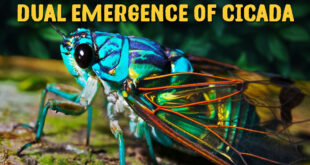- The human genome has 23 pairs of chromosomes, one inherited from each of our parents.
- The genome is the blueprint of our genetic makeup.
- As the cells divide, the DNA is copied with extremely high accuracy due to proteins that proofread and correct errors in the DNA.
- But despite this mechanism, various studies have estimated that there is still an error rate of 0.64-0.78 mutations per billion base pairs per division. But this rate is also minuscule given the large size of the human genome.
Somatic Genetic Mutation
- An error that occurs in the DNA after birth but during development is called a somatic genetic mutation.
- It is driven by the repeated ‘copy-pasting’ of the genome
- Thus, there will be more somatic genetic mutations the older an individual is and the higher the turnover(replacement of old cells with new ones) of the tissue.
- Sometimes, it can render a cell fitter than others, which leads to the formation of tumours. So these mutations are called driver mutations.
Knowledge explosion
- Somatic genetic variants are important for a number of normal physiological processes.
- For example, the immune cells in our body, which produce antibodies, undergo an enormous amount of somatic changes to create diverse proteins forming a ‘library’ of cells.
- An explosive increase in knowledge in this regard is due to our ability to sequence the genetic material in individual cells.
- Advanced microfluidics and high-throughput sequencers help sequence tens of thousands of cells from a tissue at the same time, opening big windows into genes and the functional diversity of cells in the human body.
Cancer’s signatures
- Somatic genetic variants play an important role in the development of cancers. So they can help with early detection, diagnosis, and prognosis.
- There are technologies to detect DNA from tumour cells that has ‘escaped’ the cells into blood or fluids, to spot cancer early. Similarly, certain variations in a cancer could be used as a signature of the disease’s progress and to track how a tumour has responded to some course of therapy.
SMaHT Network
- The U.S. National Institutes of Health recently launched a programme called the ‘Somatic Mosaicism across Human Tissues’ (SMaHT) Network.
- Aim: to catalyse our study of the field by discovering somatic variants, developing tools and resources to study them, and improving our ability to analyse, interpret, and organise them in different biological and clinical contexts.
- focused on understanding the breadth of somatic mosaicism and the biological and clinical significance of such somatic events in humans.
- The U.S. government has for now invested $140 million in a SMaHT-led effort to characterise somatic variants in 10-15 tissues from 150 post-mortem samples obtained from deceased individuals.
 Chinmaya IAS Academy – Current Affairs Chinmaya IAS Academy – Current Affairs
Chinmaya IAS Academy – Current Affairs Chinmaya IAS Academy – Current Affairs



